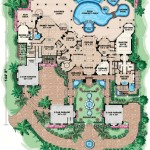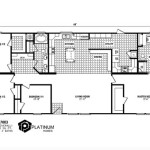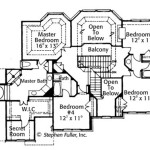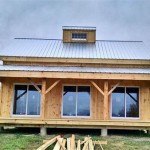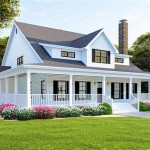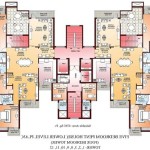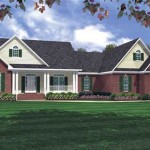Single Story Log Home Plans: A Comprehensive Guide
Single-story log homes offer a unique blend of rustic charm and modern convenience. Their sprawling layouts provide accessibility and ease of maintenance, making them an attractive option for various lifestyles. This article explores the key aspects of single-story log home plans, from design considerations and benefits to potential drawbacks and cost factors.
One of the primary advantages of single-story log homes is their accessibility. Eliminating stairs makes these homes ideal for individuals with mobility limitations, families with young children, and those planning for aging in place. Daily tasks become simpler and safer without the need to navigate multiple levels. This ease of movement also contributes to a more open and connected living environment.
From a design perspective, single-story log home plans offer significant flexibility. They can be adapted to various architectural styles, from classic rustic to contemporary. Ranch-style layouts are popular, featuring long, low profiles that blend seamlessly with natural surroundings. Open floor plans are common, creating spacious living areas ideal for entertaining and family gatherings. Furthermore, single-story designs can be readily customized to incorporate features such as covered porches, patios, and attached garages.
The construction process for single-story log homes can be more efficient and less costly compared to multi-story structures. The simpler rooflines and foundations typically require less material and labor. This can translate to shorter construction timelines and potentially lower overall project costs. However, it's important to note that the cost of logs themselves can be a significant factor, and prices can vary depending on wood species, log profile, and supplier.
Maintaining a single-story log home is generally easier than a multi-story counterpart. Exterior maintenance tasks like cleaning, staining, and sealing are more accessible without the need for scaffolding or specialized equipment. Interior cleaning and upkeep are also simplified due to the single-level layout. This ease of maintenance can save homeowners time and money over the long term.
Energy efficiency is another potential benefit of single-story log homes. The solid log walls provide natural insulation, helping to regulate indoor temperatures and reduce energy consumption. Properly sealed and insulated log homes can be remarkably energy-efficient, especially in climates with significant temperature fluctuations.
While single-story log homes offer numerous advantages, there are also some potential drawbacks to consider. One key consideration is the larger footprint required for a single-story home compared to a multi-story home with the same square footage. This can be a limiting factor on smaller lots or properties with specific building restrictions. Careful planning and site analysis are essential to ensure the chosen design fits comfortably within the available space.
Another factor to consider is the potential for increased heating and cooling costs compared to a similarly sized, well-insulated conventional home. While log walls offer inherent insulation, they may not be as effective as modern insulation materials in extreme climates. Proper insulation and energy-efficient windows and doors are crucial for maximizing energy performance in a single-story log home.
Privacy can also be a consideration in single-story designs. With all living spaces on a single level, maintaining privacy between rooms may require careful layout planning. Strategic placement of windows and doors, along with interior design elements, can help create distinct private areas within the open floor plan.
The selection of log home plans is a crucial step in the building process. Numerous pre-designed plans are available from architects and log home companies. These plans can be customized to meet specific needs and preferences. Working with a reputable architect or builder specializing in log home construction is highly recommended. Their expertise can ensure the chosen plan meets local building codes and incorporates appropriate structural and energy-efficiency considerations.
Financing a log home project requires careful planning. Log homes can sometimes present unique challenges for lenders due to their specialized construction methods. Securing pre-approval from a lender experienced with log home financing is essential. This will provide a clear understanding of financing options and help establish a realistic budget for the project.
Choosing the right log species is another important decision. Different wood species offer varying levels of durability, insect resistance, and aesthetic appeal. Popular choices include cedar, pine, and fir. Each species has its own unique characteristics and cost considerations. Researching different wood species and consulting with a log home builder can help homeowners make an informed decision based on their specific needs and budget.
Finally, understanding local building codes and regulations is essential before embarking on a log home project. Building codes can vary significantly from one region to another. Ensuring the chosen plan complies with all applicable codes and regulations is crucial for avoiding delays and costly modifications during the construction process. Working with a local builder familiar with local regulations can streamline the permitting process and ensure compliance.

One Level Floor Plans Log Cabin Cabins For Less

Four Seasons Plans Information Southland Log Homes

Single Story Log Homes Floor Plans Kits Battle Creek

Pin By Gary Bona On Log Cabin Stuff Home Floor Plans House

Browse Floor Plans For Our Custom Log Cabin Homes House Home

Log Home Floor Plans Engineering Custom Blueprints

Single Level Floor Plans

Single Story Log Home Plans

Single Story Log Homes Floor Plans Kits Battle Creek

Log Home Plans Cabin Designs From Smoky Mountain Builders Tiny Houses To Large Homes

